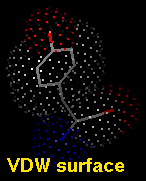
Several types of molecular representation are available in Chimera, and more than one type can be present in a single display. The default representation is a simple line or wireframe drawing in which atoms are shown as dots and bonds as wires. Further options are stick with "endcap" atoms and stick bonds, ball-and-stick with ball (small sphere) atoms and stick bonds, and sphere with sphere (full VDW radius) atoms and stick bonds. The sphere representation is also called a Corey-Pauling-Koltun (CPK) model. In addition, proteins and nucleic acids can be drawn as a ribbon, and proteins can be drawn as "pipes and planks."
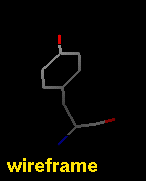
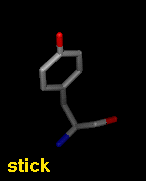
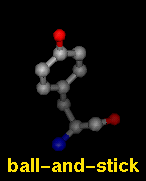
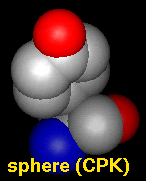
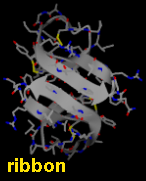
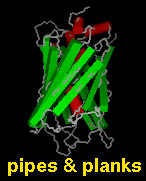
Wire linewidth is a model attribute; that is, different parts of a single model cannot have different linewidths (although they can be in different, non-wire representation types). Draw mode, which reflects the representation type (wire, stick, ball-and-stick, or CPK), is an attribute of individual atoms and bonds. Whether ribbon is shown is an attribute at the residue level. The pipes-and-planks representation is not an attribute, but a separately constructed VRML object.
Analogous to the situation with bonds, draw mode (wire or stick) is an attribute of individual pseudobonds, whereas wire linewidth and stick scale are attributes of the pseudobond group.
There are several ways to change or add representations:
Molecular surfaces can be created, displayed, and manipulated in real time. A surface is calculated and displayed using the Surface section of the Actions menu or the command surface.
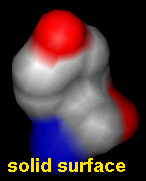
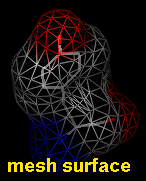

The surface representation can be switched among solid, mesh, and dot using:
Note that molecular surfaces produced by Chimera are created with embedded software from the MSMS package by Prof. Michel Sanner, described in:
M.F. Sanner, A. J. Olson, and J.C. Spehner, "Reduced surface: an efficient way to compute molecular surfaces" Biopolymers 38:305 (1996).The surface calculated in Chimera consists of probe contact plus reentrant surface; this is different from the surface traced out by the probe center (often called the solvent-accessible surface). Probe radius and the density of vertices can be adjusted in the surface attributes panel.
A VDW dot surface can be displayed with the command vdw and its density adjusted with vdwdensity (density=5 in the example below).

|
Finally, isosurfaces (contour surfaces) for three-dimensional numerical data sets can be displayed with Volume Viewer and DelPhiViewer.